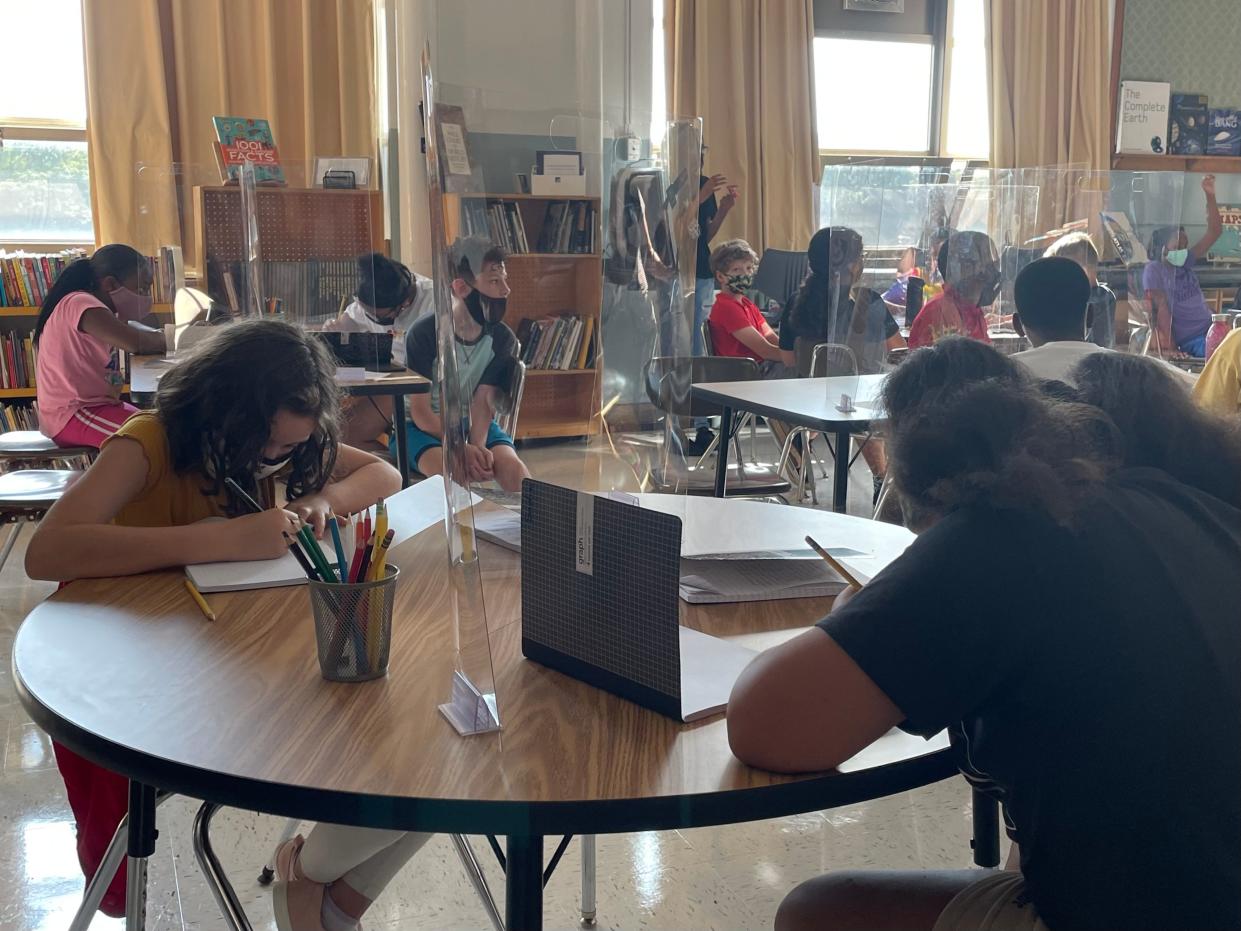Each MPS school can choose how to spend $100,000 in relief funds. Here are their options.

With a slice of the federal COVID-19 relief funds flowing to Milwaukee Public Schools, each school community will be deciding how to spend its own $100,000 piece of the pie.
These school stipends, which tally $13.6 million, are just a fraction of the $770 million in federal support MPS has received in the pandemic through the Elementary and Secondary School Emergency Relief Fund, known as ESSER.
The Milwaukee School Board has allocated other funds to district-wide programs, as well as several pots of money that individual schools can tap into for specific purposes, such as facility renovations and student organizations.
The $100,000 for each school come with the fewest strings. The money is to be spent before October 2024.
It was an idea pitched by local nonprofit Common Ground, which called for more than three times as much funding for each school to control locally. While administrators didn’t include the idea in their proposed budget for stimulus funds, school board member Marcela Garcia successfully proposed providing $100,000 for each school.
Each school is required to include students, families and staff in the process of deciding how to spend the money. When principals submit their spending choices to district administrators, they must include agendas and sign-in sheets to prove they met with students, families and staff.
Schools can choose from 'menu' of options
The funds aren't completely unrestricted. Administrators said they worked with teachers and school leaders to craft a "menu" of options for the funds, presented to a school board committee last week and to be provided at the full board meeting Thursday.
Schools aren't limited to the menu, though. MPS Chief Financial Officer Martha Kreitzman said while options on the menu are essentially pre-approved, schools can suggest something off-menu for approval from district administrators.
The menu covers a range of spending options, from items as small as Chromebook headphones to hiring additional teachers.

The menu outlines options for spending in five categories, each with a list of examples, including:
Learning
Educational services, including new staff positions, field trips, and coverage of student fees
Classroom resources, including software, books and other class materials
Professional development, including school retreats, staff training and conferences
Family engagement, including meals, transportation, interpretation and childcare options to allow families to parents to participate in school activities and conferences
Health
Mental health, including violence intervention programs and "zen den" rooms for students
Physical health, including COVID precautions and exercise equipment
Social emotional learning, including mindfulness, art therapy, life skills instruction, structured recess and other resources
Facilities
Air quality, including purifiers and fans
Water stations
Furniture for cafeterias, classrooms and outdoor areas
Modifications to buildings, including bathrooms, auditoriums, libraries, murals, playgrounds, outdoor learning spaces and green infrastructure
Technology
Chromebooks and headphones
Software for programs in physical education, music, art and library
Adaptive equipment for students with special needs
Staff training in new technology
Extracurriculars
Student organizations and non-traditional clubs like rowing, horseback riding, fishing, lacrosse and skateboarding
Athletics, including sports equipment, team uniforms and coverage of entry fees for Milwaukee Recreation leagues
Childcare materials including games, instruments and art supplies
Marketing, transportation and training for after-school programs
School Board President Bob Peterson said he wished the menu listed more ideas related to "green infrastructure," which isn't defined further in the menu. He suggested schools consider a range of environmental projects such as gardens and recycling programs.
“I know a lot of staff and students are very interested in these types of things,” he said.
Separately, schools apply for facility projects
Already, MPS schools have applied for funding from another pot of the COVID relief money: $65 million set aside for building renovations and additions.
The school board will consider potentially approving those projects at their meeting Thursday.
Schools have entered requests for over 700 projects for a total estimated cost of $469 million.
Administrators have proposed greenlighting a list of projects within the $65 million budget. Most of the rejected projects were building additions. Three requests for air conditioning were also rejected. Board members may choose to change the list.
The most expensive project recommended to move forward is a $9.9 million request from Reagan High School for a gymnasium and four new science labs.
Mary Grogan, a school counselor at Reagan, has urged board members to approve the request, noting that the high school is operating out of a building made for middle schoolers that is now "bursting at the seams."
"No one should attend high school in a building designed for middle schoolers," Grogan said.
Additionally, Vincent High School requested $3.75 million for repairs to agricultural program areas, a new barn and remodels of its environmental science, horticulture, aquaponics and food science classrooms and labs.
Other top-spending project requests include classroom additions at Greenfield Bilingual ($4 million), Goodrich ($3 million) and Milwaukee High School of the Arts ($2 million).
Superintendent Keith Posley said the addition at Goodrich, which will take advantage of unfinished and unused basement space, is especially important as the building is already crowded and in an area of the north side filled with competition.
"It's surrounded by choice and charter schools over in that area and we need to have a building that's large enough to take in the students in that area, and I think this is a golden opportunity to do just that," he said.
Only three schools did not submit any requests: Auer Avenue School, Riley School and Golda Meir's Lower Campus. Golda Meier did request $1.35 million for remodeling its professional development center into classroom spaces at its upper campus.
Contact Rory Linnane at rory.linnane@jrn.com. Follow her on Twitter at @RoryLinnane.
This article originally appeared on Milwaukee Journal Sentinel: How each MPS school can spend $100,000 in COVID relief ESSER funds

